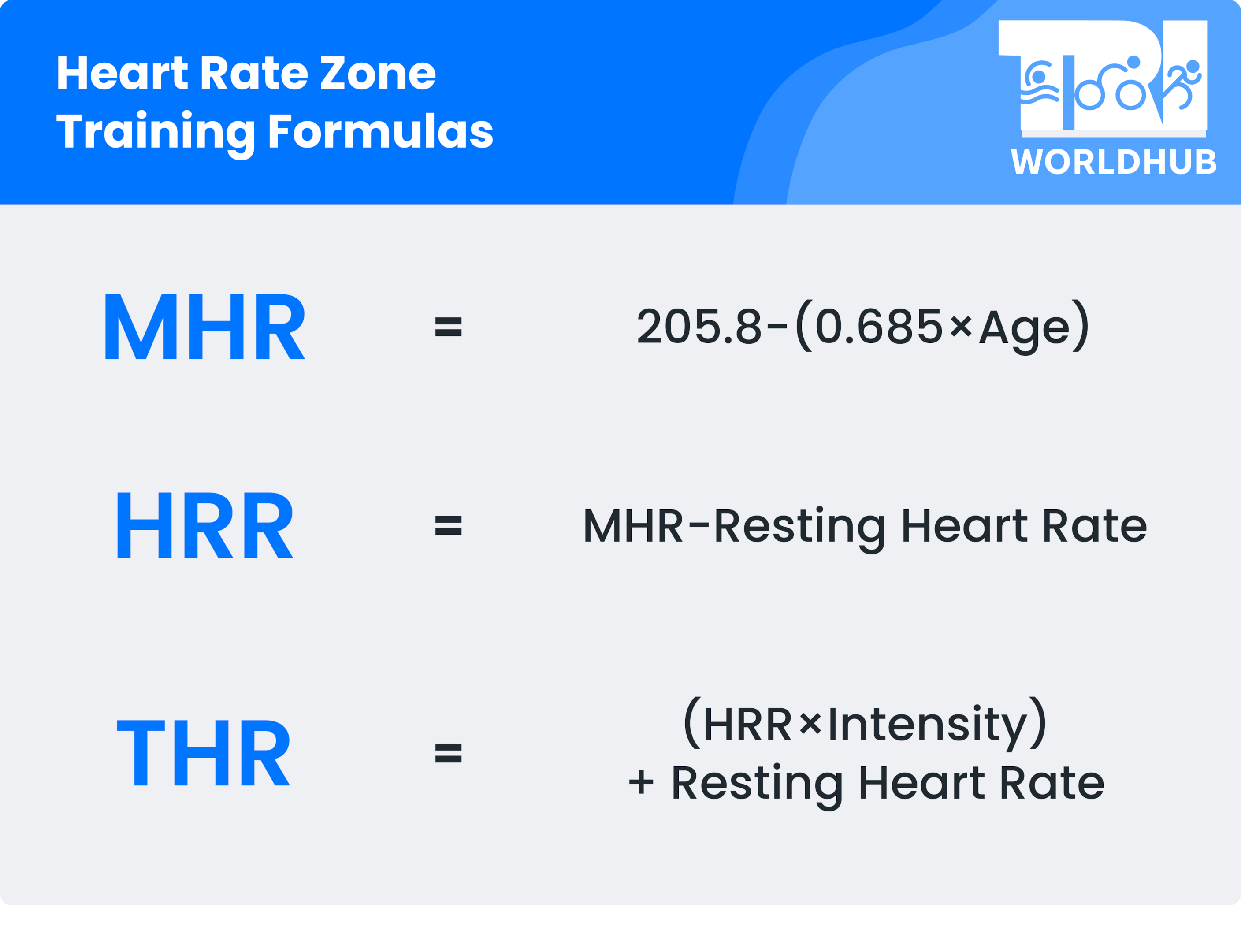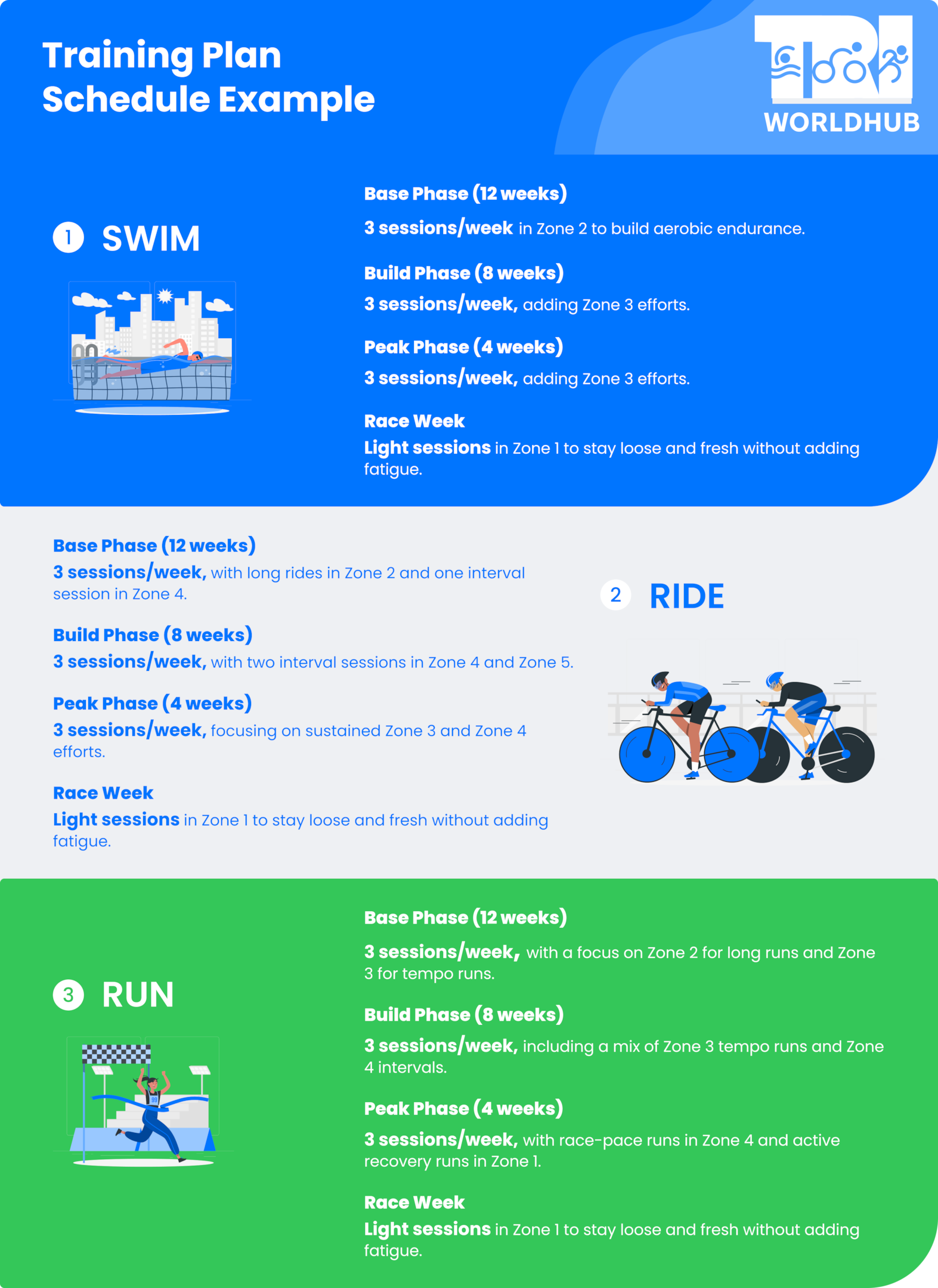Recovery
Endurance
Aerobic
Anaerobic
VO2max
Ever wondered if you’re getting the most out of your workouts?
Knowing your heart rate zones can be the game-changer you need!
It’s like having a personalized roadmap to better fitness, helping you exercise smarter, not harder.
Let’s dive into how you can find your perfect heart rate zones and start training effectively today.
Heart rate training zones are ranges that reflect the intensity of your workout.
The heart rate zone calculator finds your 5 HR Zones that you can use when calculating the intensity of the exercise you are taking.
Below is a summary of each heart rate training zone and an overview of measures of resting heart rate.
To calculate your heart rate zones, you need to determine your Maximum Heart Rate (MHR) and your Heart Rate Reserve (HRR).

Let’s assume you are 30 years old with a resting heart rate of 60 bpm:
70% Intensity: (125.25×0.70)+60=87.68+60=147.68 bpm
So, Zone 2 would range from approximately 135 to 148 bpm.

Let’s explore why knowing your heart rate training zones is beneficial. We will focus mainly on endurance sports, such as triathlon.
Heart rate training zones help triathletes optimize their training efficiency by ensuring they exercise at the right intensity for different phases of their training.
This tailored approach maximizes performance improvements and reduces the risk of overtraining or injury.
During the base-building phase of triathlon training, focusing on Zone 2 (60-70% of MHR) allows athletes to build aerobic endurance without causing excessive fatigue.
This is essential for long-distance events like Ironman triathlons.
Each heart rate zone targets different physiological responses.
This allows athletes to design workouts that meet specific goals, such as improving endurance, increasing speed, or enhancing recovery.
A triathlete might use Zone 4 (80-90% of MHR) for interval sessions on the bike to improve their lactate threshold.
This high-intensity work helps them sustain a faster pace during the cycling leg of a triathlon.
Heart rate training zones provide an objective way to monitor and manage workout intensity, ensuring athletes stay within desired effort levels.
This is especially important during longer training sessions or races where perceived effort can be misleading.
During long run, a triathlete can keep an eye on their heart rate to ensure they remain in Zone 2 or Zone 3 (70-80% of MHR).
This helps prevent them from going too hard early on and ensures they conserve energy for the entire session or race.
Incorporating lower intensity zones, like resting HR, enhances recovery and prevents overtraining.
It is crucial for maintaining consistent progress and avoiding injuries.
After a tough race or an intense training block, a triathlete might focus on Zone 1 (50-60% of MHR) during recovery workouts.
This promotes blood flow and aids in muscle repair without adding additional stress to the body.
Understanding and utilizing heart rate zones allows triathletes to pace themselves more effectively on race day. This will help them maintain a sustainable effort across all three disciplines (swimming, cycling, and running).
A triathlete might plan to stay in Zone 3 (70-80% of MHR) during the swim and bike segments of a race to conserve energy.
Then, they might push into Zone 4 (80-90% of MHR) during the run, knowing they only need to maintain that intensity until the finish line.

A triathlon training plan uses heart rate zones to optimize workouts. This helps athletes improve performance and endurance. It’s a practical and effective method for training.
Check out this training plan schedule example to see how you can apply your heart rate zones knowledge to your workout sessions.

Using a heart rate zone calculator helps you exercise more effectively by ensuring you train at the right intensity for your fitness goals. Whether you want to burn fat, improve endurance, or increase cardiovascular health, knowing your heart rate zones allows you to customize your workouts for maximum benefit. It takes the guesswork out of your training, providing a clear and scientific way to measure and achieve your fitness objectives.
To determine your heart rate zones, you can use the formulas provided. Plug in your age and resting heart rate to calculate your MHR, HRR, and then determine the ranges for each zone based on the intensities.
For general fitness and endurance, running in Zone 2 (60-70% of your Max HR) is effective. This zone helps improve your aerobic base and allows you to run longer distances comfortably.
For overall cardiovascular health, Zone 2 (60-70%) and Zone 3 (70-80%) are often recommended. These zones enhance your aerobic capacity, promote fat burning, and improve endurance without putting excessive strain on your heart.
Add a little more for HRRR to 0.87 (80% – 90% – 65%). Add a resting heart rate to that number. These three numbers represent the heart rate of exercise you want when calculating your target heart rate zone using the HR R algorithm. Typically, your heartbeat is between these two values when doing vigorous exercises.
For weight loss, Zone 2 (60-70% of MHR) is often recommended. This zone is effective for burning fat and improving basic endurance, making it suitable for long, steady-state cardio sessions.
Yes, a heart rate zone calculator can be used for various types of workouts including running, cycling, swimming, and even high-intensity interval training (HIIT). Each workout type can benefit from knowing and training within specific heart rate zones to optimize performance and results.